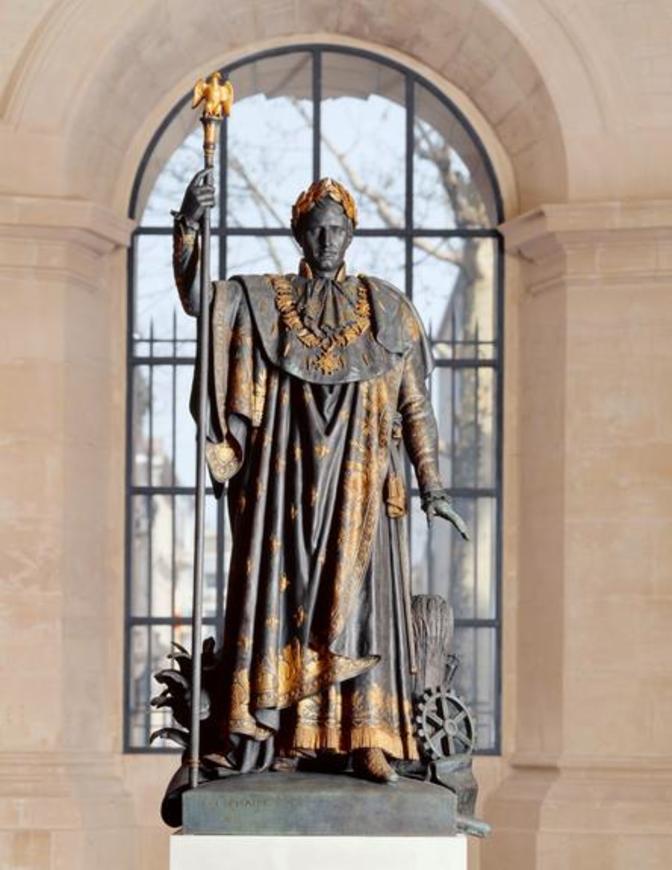This larger-than-life bronze sculpture presents Napoleon "en pied", standing up. It features his usual attributes: the laurel crown and the imperial mantle adorned with bees, with his right hand on his sceptre, surmounted by an eagle. In particular, this staging can be seen in a sketch by David, held in the museum's collections, as well as in "Portrait of Napoleon in Coronation Robes" by François Gérard.
Napoleon's right hand is outstretched above a pile of objects. Among them, we find two speech scrolls. They bear inscriptions relating to imperial decrees allowing the development of sugar-beet farming and the mechanical spinning of linen.
This sculpture was commissioned by the Lille Chamber of Commerce in 1853, in order to commemorate these decrees that allowed the development of two of the most important industries in the north of France at that time. The bronze used came from the Chamber of Commerce's former coining presses, themselves made from cannons taken during the Battle of Austerlitz. The work is, therefore, deeply infused with symbolism!
It was originally placed in the centre of the Lille Vieille Bourse, but it was moved to make room in 1976. Today, Napoleon has found a fitting space in the museum: the Napoleon rotunda.
Detail: The speech scrolls
Detail: Sketch by David

This larger-than-life bronze sculpture presents Napoleon "en pied", standing up. It features his usual attributes: the laurel crown and the imperial mantle adorned with bees, with his right hand on his sceptre, surmounted by an eagle. In particular, this staging can be seen in a sketch by David, held in the museum's collections, as well as in "Portrait of Napoleon in Coronation Robes" by François Gérard.
Napoleon's right hand is outstretched above a pile of objects. Among them, we find two speech scrolls. They bear inscriptions relating to imperial decrees allowing the development of sugar-beet farming and the mechanical spinning of linen.
This sculpture was commissioned by the Lille Chamber of Commerce in 1853, in order to commemorate these decrees that allowed the development of two of the most important industries in the north of France at that time. The bronze used came from the Chamber of Commerce's former coining presses, themselves made from cannons taken during the Battle of Austerlitz. The work is, therefore, deeply infused with symbolism!
It was originally placed in the centre of the Lille Vieille Bourse, but it was moved to make room in 1976. Today, Napoleon has found a fitting space in the museum: the Napoleon rotunda.
Detail: The speech scrolls
Detail: Sketch by David